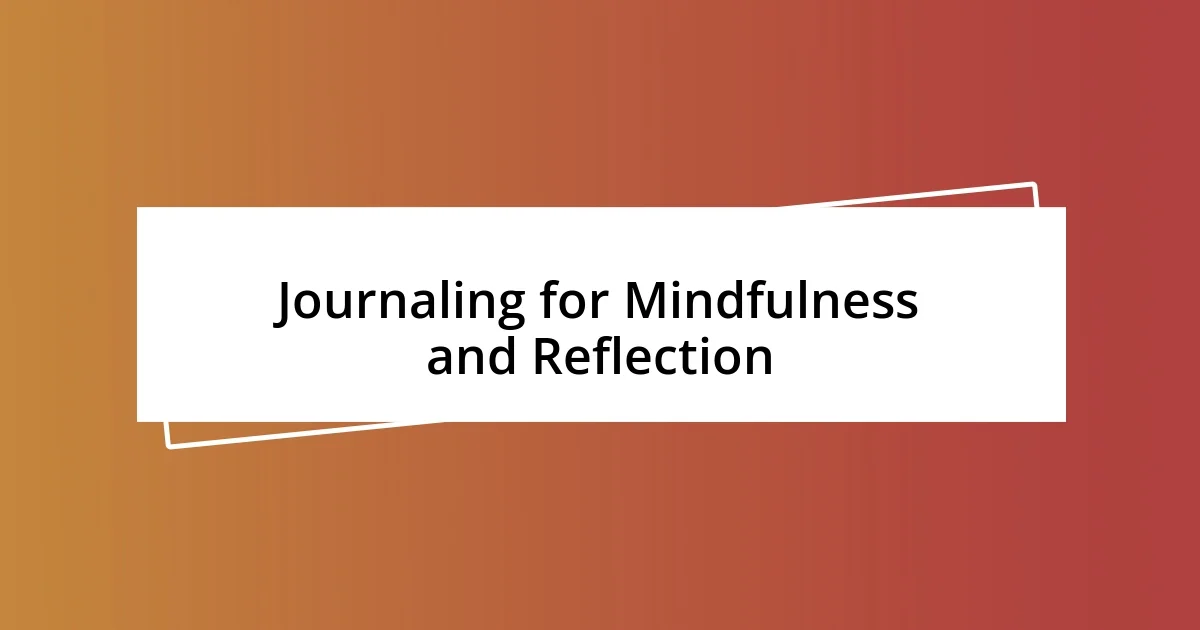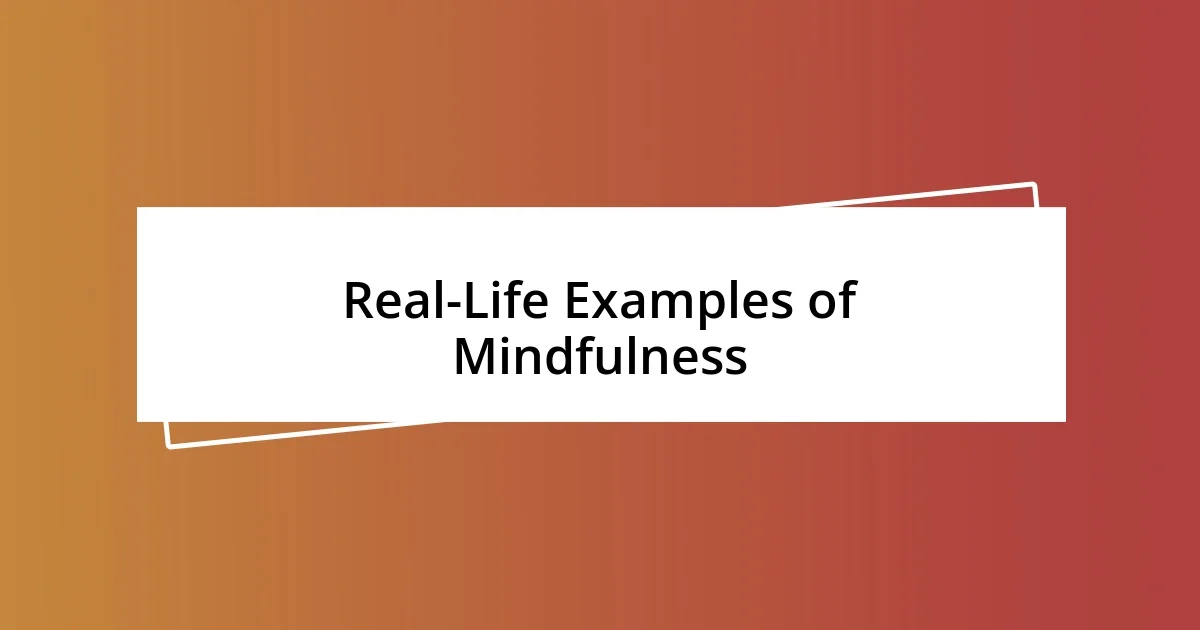Key takeaways:
- Understanding anxiety and acknowledging personal experiences can foster connections and relieve feelings of isolation.
- Implementing mindfulness techniques, such as breathing exercises and gratitude practices, can significantly reduce anxiety levels and promote a sense of calm.
- Tracking progress and engaging with community support enhance mindfulness practices and provide motivation throughout the journey of managing anxiety.

Understanding Anxiety Challenges
Anxiety can often feel like a storm, brewing without warning and leaving us grasping for calm. I vividly remember moments when my heart raced, and my palms felt clammy just walking into a crowded room. Have you ever experienced that sense of impending doom, even when everything appeared perfectly fine? It’s a heavy burden that can cloud your mind and drown out your thoughts.
Understanding anxiety is key to overcoming it. I once spent hours lost in my thoughts, analyzing every little mistake I’d made, which only fueled my anxiety. What if I had taken a step back to acknowledge those feelings instead of letting them spiral? I believe it’s vital to realize that anxiety often stems from our desire for control and perfection, pushing us to react to stress rather than responding thoughtfully.
Each person’s journey with anxiety is unique, shaped by individual experiences and triggers. There was a time when I felt utterly isolated, convinced no one else understood what I was going through. But as I started to share my experiences, I discovered others who felt the same way. Have you found someone with a similar struggle? It can be unbelievably freeing to realize you’re not alone in this chaotic sea of emotions.

Introduction to Mindfulness Techniques
Mindfulness techniques have been transformative for me, serving as a lighthouse during my stormy periods of anxiety. At its core, mindfulness invites us to stop and truly experience the present moment. When I first started practicing breathing exercises, I remember feeling a palpable shift in my anxiety levels. Just focusing on my breath helped anchor my thoughts, allowing me to reconnect with a sense of calm.
One technique I found particularly helpful is body scanning. This practice involves mentally checking in with different parts of your body, which helped me identify areas of tension. I recall lying still and feeling the physical sensations that arose, often bringing awareness to stress accumulations I hadn’t acknowledged. Through this exercise, I recognized how my body communicated my emotional state, a discovery that was both enlightening and relieving.
Another powerful tool in my mindfulness journey is the practice of gratitude. I began writing down three things I was thankful for each day. This practice not only shifted my focus away from anxious thoughts but also nourished a deeper appreciation for life’s simple joys. Have you ever noticed how a grateful mindset can transform your perspective? I was amazed at how reflecting on positive aspects of my day opened up new pathways for happiness amidst anxiety.
| Technique | Description |
|---|---|
| Breathing Exercises | Focusing on the breath to anchor the mind and reduce anxiety. |
| Body Scanning | A mental check-in with each body part to identify and release tension. |
| Gratitude Practice | Writing down things to be thankful for to shift focus from anxiety. |

Practicing Breathing Exercises Daily
When I started integrating breathing exercises into my daily routine, I was surprised by how impactful such a simple act could be. At first, it felt a bit strange, sitting quietly and focusing solely on my breath. However, as I continued, I noticed those moments began to anchor my day. There was one morning when I awoke feeling particularly anxious. I dedicated just five minutes to mindful breathing, and I could physically feel the tension releasing from my shoulders, something I hadn’t even realized I was holding onto.
Here are some breathing techniques that I found especially helpful:
- Diaphragmatic Breathing: Focus on breathing deeply into your diaphragm rather than short, quick breaths into your chest. This promotes a sense of calm and steadiness.
- 4-7-8 Breathing: Inhale for 4 seconds, hold for 7 seconds, and exhale for 8 seconds. I love this technique because it not only calms my mind but also regulates my heart rate.
- Box Breathing: Inhale for a count of 4, hold for 4, exhale for 4, and hold again for 4. This rhythmic pattern mimics a sense of control, which can be incredibly reassuring during anxiety episodes.
Embracing these techniques created a routine that I leaned on, particularly during challenging moments. There were times when I found myself in overwhelming situations, and by simply pausing to breathe, I could step back from my anxiety and gain a clearer perspective. I often remind myself that it’s okay to take a break, breathe, and then approach life’s hurdles with renewed strength.

Incorporating Mindfulness into Routine
Making mindfulness a staple in my daily routine has been a game changer. One of my favorite strategies is to set aside a few moments in the morning for mindful coffee drinking. As I sip my coffee, I pay attention to its warmth and flavor, which brings me fully into the moment. This simple act has transformed my chaotic mornings into a more tranquil experience. Have you ever paused to really savor your morning drink? It might surprise you how grounding a single moment can be.
In the midst of a busy day, I also find that taking mindful walks works wonders for my mental clarity. I step outside, breathe in the fresh air, and focus on each step I take. While walking, I consciously notice the sensations of my feet touching the ground and the sounds around me. It’s during these walks that I feel connected to my environment, almost like a gentle reminder that I’m part of something bigger. Often, I come back home feeling refreshed and ready to tackle the rest of the day.
Lastly, I like to incorporate mindfulness into my wind-down routine by dedicating time before sleep for reflection. I might jot down my thoughts or meditate for a few minutes, allowing the day’s worries to float away. Wondering what I could let go of often leads me to insights about my anxiety triggers. It’s fascinating how examining my day can help clear the mind for a more peaceful night’s sleep. What do you do at the end of your day that helps you unwind? Finding your own personal rituals could be a comforting step toward embracing mindfulness.

Journaling for Mindfulness and Reflection
Journaling has been a pivotal tool in my journey toward mindfulness and reflection. I often find solace in expressing my thoughts on paper, especially during moments when anxiety feels overwhelming. There’s something incredibly liberating about emptying my mind onto the page, almost like purging the chaos lingering in my head. Have you ever tried just writing down everything that crosses your mind in a single sitting? It can be surprisingly cathartic.
One technique I really enjoy is the practice of gratitude journaling. Each evening, I jot down three things I’m thankful for, no matter how small. On particularly rough days, that simple act helps me to shift my focus away from anxiety and toward what truly matters. One night, I wrote about a delightful conversation I had with a friend. The warmth of that memory flooded back, reminding me that even on tough days, joy can exist in the simplest moments.
Incorporating prompts into my journaling has also sparked profound reflections. I often ask myself questions like, “What triggered my anxiety today?” or “What can I learn from this experience?” These questions allow me to explore my feelings deeply and illuminate patterns I might otherwise overlook. There was a day I discovered that my anxiety often spikes before large meetings—an insight that helped me prepare better emotionally and mentally. Do you take the time to ask yourself these kinds of questions? Exploring your thoughts on paper can pave the way for transformative realizations.

Real-Life Examples of Mindfulness
Engaging with mindfulness can take many forms, and for me, one powerful example is mindful eating. I vividly remember a lunch where I decided to put my phone away and focus solely on my meal. With each bite, I savored the flavors and textures, truly appreciating the nourishment rather than mindlessly going through the motions. Have you ever noticed how a single meal can feel like a delightful experience when you tune in? It’s amazing how this practice transformed what often feels like a rushed necessity into a moment of joy and gratitude.
Another way I’ve witnessed mindfulness in action is during my yoga sessions. There’s a specific moment in each class when we settle into our final resting pose, Savasana. I recall a session where the instructor guided us to visualize any tension or worry melting away with each exhale. Engaging fully in that moment felt like releasing a heavy weight off my shoulders. Have you ever experienced such intense relief? It was a reminder that those fleeting moments of peace can have a lasting impact on my overall mental state.
I also find mindfulness in the quiet spaces of my day, particularly during my commute. I often use this time to practice deep breathing, focusing on the rhythm of my breath as the world whizzes by. One day, I noticed how calming it was to let the sounds of the city blend into a soothing backdrop. Instead of feeling hurried and stressed, I felt a sense of tranquility wash over me. Have you explored your surroundings in this way? Finding peace in ordinary moments can offer a newfound appreciation for life’s everyday beauty.

Measuring Progress and Staying Motivated
Tracking my progress in managing anxiety through mindfulness has been a revelation. I remember the day I created a simple checklist of my mindfulness practices, like meditation and deep breathing, and noted how I felt after each session. The joy of checking off each completed practice was a tangible reminder of my growth. Have you ever celebrated small wins? It’s remarkable how those simple marks can reflect a bigger journey.
I also find motivation in revisiting my past entries in my anxiety journal. Recently, I stumbled upon an entry where I felt overwhelmed by daily stressors, yet now, I can navigate similar moments with much more ease. Seeing that transformation reminded me of the resilience I’ve built over time. Isn’t it powerful to witness your own progress? That feeling of growth ignites a spark to continue my mindfulness journey.
When I hit a plateau in my mindfulness practice, I turn to community for inspiration. Joining a local mindfulness group opened my eyes to new techniques and shared struggles. One evening, we discussed how we all experience ebbs and flows in our practice, making me feel less alone. Connecting with others who are on a similar path not only motivates me but also enhances my understanding of mindfulness. Have you sought out community support? It can be a game-changer in your journey.













